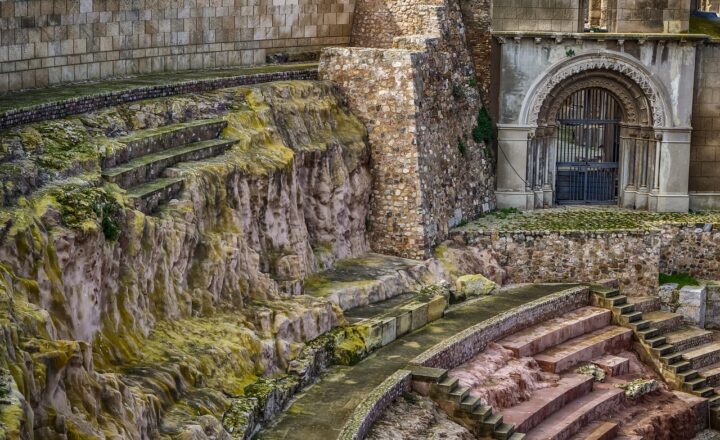
The Colosseum, an iconic symbol of ancient Rome, is not just an architectural marvel but also a historical testament to the Roman Empire’s fascination with entertainment and societal control. With a capacity of over 50,000 spectators, the Colosseum served as the epicenter of urban entertainment, featuring gladiatorial games, animal hunts, and mock naval battles. Built during the Flavian dynasty around A.D. 70-80, it reflects the political, social, and economic conditions of Rome at the time. This article explores the multifaceted purpose of the Colosseum, shedding light on its role in entertaining the masses and reinforcing the power of the emperor.
1. Historical Context: The Rise of the Colosseum
The construction of the Colosseum was commissioned by Emperor Vespasian as part of a larger agenda to restore the glory and public trust in the Flavian dynasty. The emperor sought to divert the attention of the Roman populace from political unrest and discontent prevalent after the fall of Nero. Through the grandiosity of the Colosseum, Vespasian aimed to demonstrate the power and benevolence of his rule.
Construction of the Colosseum began in A.D. 70 and was completed in A.D. 80 under his son, Emperor Titus. It was built on the site of Nero’s Domus Aurea, a luxurious palace notorious for its extravagance. This strategic choice symbolized a shift from imperial opulence to public utility, as Vespasian aimed to reclaim public spaces for the people. The Colosseum was designed as a gift to the Roman citizens, intended to provide free entertainment, thereby promoting political loyalty and social cohesion.
2. Entertainment Royalty: Gladiatorial Games and Beyond
The primary function of the Colosseum was to host various public spectacles. The most famous of these were the gladiatorial games that showcased the bravery and skill of fighters trained to entertain. Spectators would gather to witness thrilling duels, often involving highly trained gladiators who risked their lives for fame and glory. Gladiators often came from slave backgrounds, prisoners of war, or were criminals, adding a grim reality to the entertainment.
Alongside gladiatorial fights, the Colosseum also hosted exotic animal hunts, where emperors showcased their control over nature and the world’s far reaches. Animals such as lions, elephants, and bears were brought in from Africa, signaling the Roman Empire’s vast territorial reach and inducing awe among the populace. Mock naval battles, known as “naumachiae,” were also staged in the Colosseum, where the arena could be flooded to simulate a body of water, further thrilling the audience.
These spectacles served a dual purpose of entertainment and a means of social control. By captivating the public’s attention, the emperors could redirect the people’s grievances away from political issues, pacifying dissent and reinforcing their authority.
3. Societal Reflection: Class and Spectatorship
The seating arrangement within the Colosseum reflected the hierarchical structure of Roman society, with different sections designated for the elite and average citizens. The closer your seat to the arena, the higher your status. Senators and high-ranking officials had front-row seats, while the general populace sat farther back. This arrangement reinforced class distinctions, allowing the rich to observe the struggles of the lower classes while also showcasing their political and social dominance.
Furthermore, the spectator experience was carefully orchestrated. Emperors and officials would make grand entrances, and they often used these events for propaganda purposes, showcasing their power, wealth, and control over the empire. Engaging with the audience directly, emperors would often address the crowd or make gestures of mercy toward defeated gladiators, further manipulating public sentiment.
4. Political Tool: Filling the Arena, Filling the Coffers
The events held at the Colosseum required immense funding, often derived from the spoils of war or taxation. As Rome expanded its territories through conquest, conquered territories not only provided riches but also prisoners who served as gladiators or captive beasts for these displays. This financial influx played a crucial role in sustaining the spectacle, keeping the populace entertained while the ruling class maintained its wealth and power.
The games were also a critical means of demonstrating the emperor’s generosity. Free admission to the Colosseum allowed all citizens the opportunity to attend, and the distribution of free food during events fostered loyalty. Emperors understood the critical link between bread and circuses—if the populace was entertained and well-fed, they would be less likely to revolt against their rulers.
5. Legacy of Control and Entertainment
The lasting impact of the Colosseum extends beyond its physical grandeur. It galvanized a culture of entertainment that influenced societies for centuries, laying a foundational precedent for public spectacles in modern times. The parallels between the Colosseum’s events and contemporary entertainment practices—sports, concerts, and public festivals—are striking; both serve as a means of public engagement and distraction from societal issues.
In a way, the Colosseum established the concept of entertainment as a tool for social order. Political leaders today still recognize the power inherent in captivating public attention through spectacles, whether that be through sporting events or mass media.
Conclusion: A Dual Legacy
The Colosseum remains an enduring symbol of the complexities of the Roman Empire’s relationship with its citizens. Designed both as an arena for entertainment and as a tool for political control, it showcases how power can be maintained through the spectacle. Today, it stands as a historic landmark, drawing millions of visitors who marvel at its architecture and acknowledge its dual legacy.
Understanding the Colosseum serves as a reminder of the intersection of culture, politics, and society, encouraging us to consider how historical events shape our present-day experiences and our understanding of authority and public engagement. As spectators, both then and now, we find ourselves drawn to spectacles that entertain, engage, and give us a glimpse into the complexities of human nature and governance.







